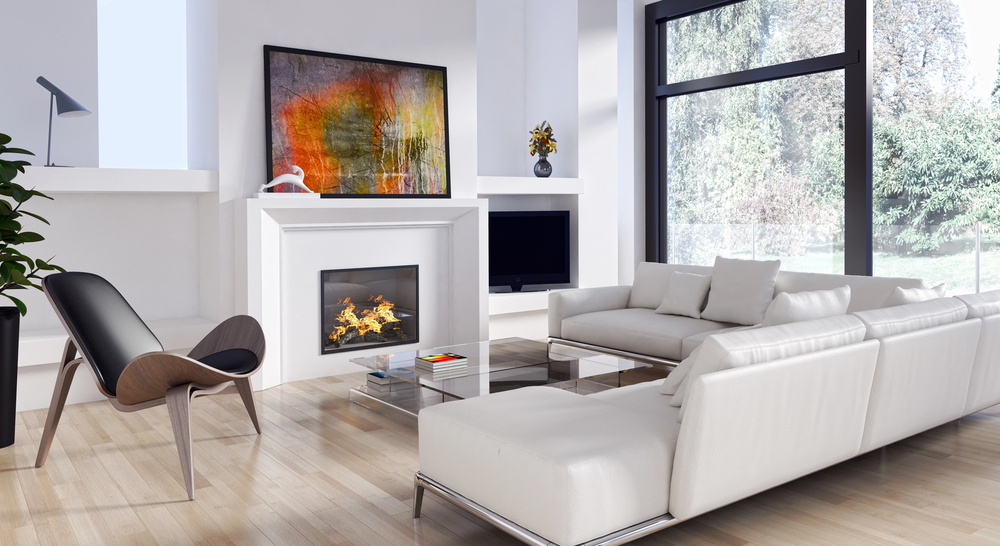Which Flooring Is Best for Each Room? (2025 Expert Guide)
Choosing the right flooring for each room in your home can dramatically affect comfort, style, heat insulation and long-term value. From the warmth of a bedroom carpet to the water resistance of kitchen vinyl, every material works differently depending the room usage and moisture levels.
This expert guide breaks down which flooring is best for each room: based on durability, maintenance, moisture resistance, and design versatility.
Why Choosing the Right Flooring Matters
Flooring isn’t a one-size-fits-all decision. Each space faces different conditions: temperature fluctuations, humidity, wear and tear and, of course, what you want from the look of the space.
According to the National Wood Flooring Association (NWFA), understanding your subfloor, humidity levels, and foot traffic is essential to ensuring longevity and avoiding costly repairs. Making the right choice now saves you from premature damage, warping or replacements later.
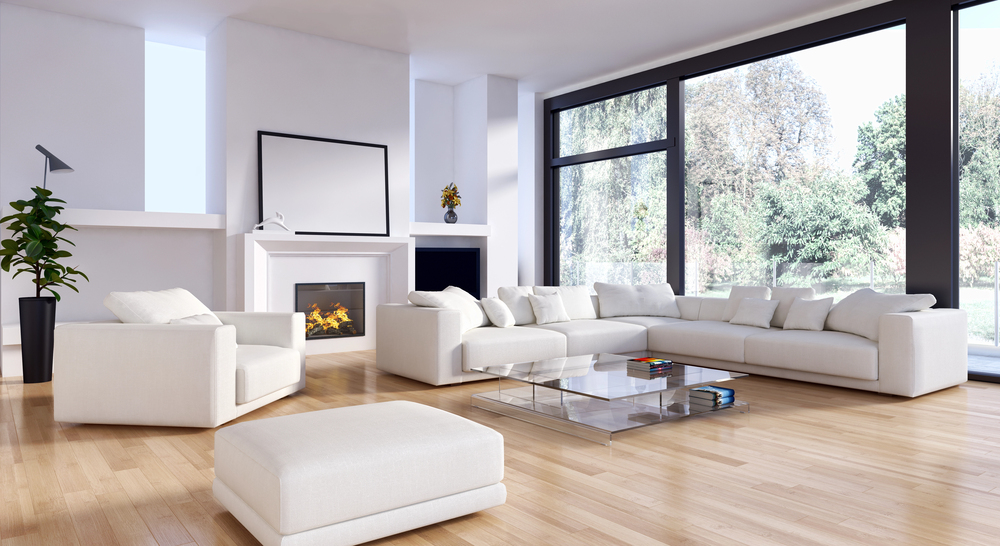
What’s the Best Flooring for Living Rooms?
Key Considerations:
- Comfort underfoot
- Aesthetic consistency with open-plan areas
- Durability for daily use
Top Recommendations:
- Engineered Wood Flooring
- Why it works: Engineered boards consist of a hardwood veneer over a stable plywood base, making them less prone to expansion than solid wood. They’re perfect for homes with underfloor heating and variable temperatures.
- Design flexibility: Available in oak, walnut, and ash finishes, with options for brushed, oiled, or lacquered textures.
- Lifespan: 20–30 years with proper care.
- Why it works: Engineered boards consist of a hardwood veneer over a stable plywood base, making them less prone to expansion than solid wood. They’re perfect for homes with underfloor heating and variable temperatures.
- Luxury Vinyl Plank (LVP)
- Why it works: Modern LVP mimics real wood or stone but is scratch-resistant, waterproof, and affordable.
- Best for: Busy households with kids or pets.
- Maintenance: Simple vacuuming and damp mopping — no refinishing required.
- Why it works: Modern LVP mimics real wood or stone but is scratch-resistant, waterproof, and affordable.
- Carpet
- Why it works: Soft, sound-absorbing, and available in hundreds of colours and fibres.
- Best for: Family lounges and media rooms.
- Expert tip: Look for stain-resistant nylon or solution-dyed polyester carpets for longevity.
- Why it works: Soft, sound-absorbing, and available in hundreds of colours and fibres.
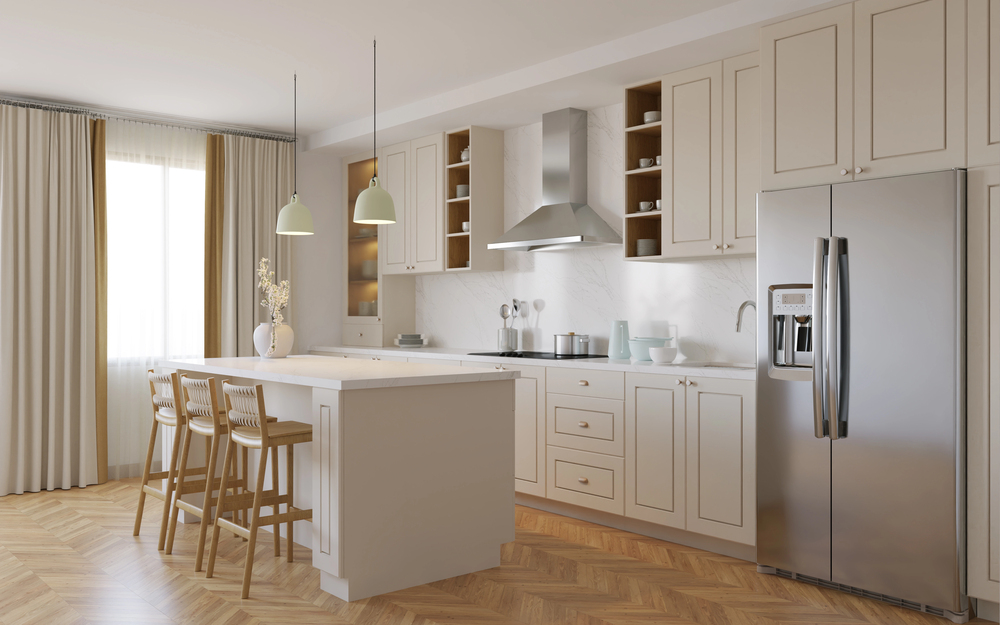
Which Flooring Is Best for Kitchens?
Key Considerations:
- Water resistance
- Ease of cleaning
- Heat compatibility (especially with underfloor heating)
Top Recommendations:
- Luxury Vinyl Tile (LVT)
- Why it works: 100% waterproof and resilient to spills, scratches, and heavy foot traffic.
- Design versatility: Available in realistic stone and herringbone wood looks.
- Bonus: Warm underfoot compared to ceramic.
- Why it works: 100% waterproof and resilient to spills, scratches, and heavy foot traffic.
- Porcelain or Ceramic Tile
- Why it works: Highly durable and easy to sanitise: ideal for food-prep areas.
- Slip resistance: Choose a matte or textured finish (R10+ rating) for safety.
- Expert insight: Porcelain tiles have lower water absorption (<0.5%), making them superior to standard ceramics.
- Why it works: Highly durable and easy to sanitise: ideal for food-prep areas.
- Engineered Wood
- Why it works: Adds visual continuity from open-plan living areas into the kitchen.
- Caution: Needs a protective sealant and immediate cleanup of spills to prevent swelling.
- Why it works: Adds visual continuity from open-plan living areas into the kitchen.
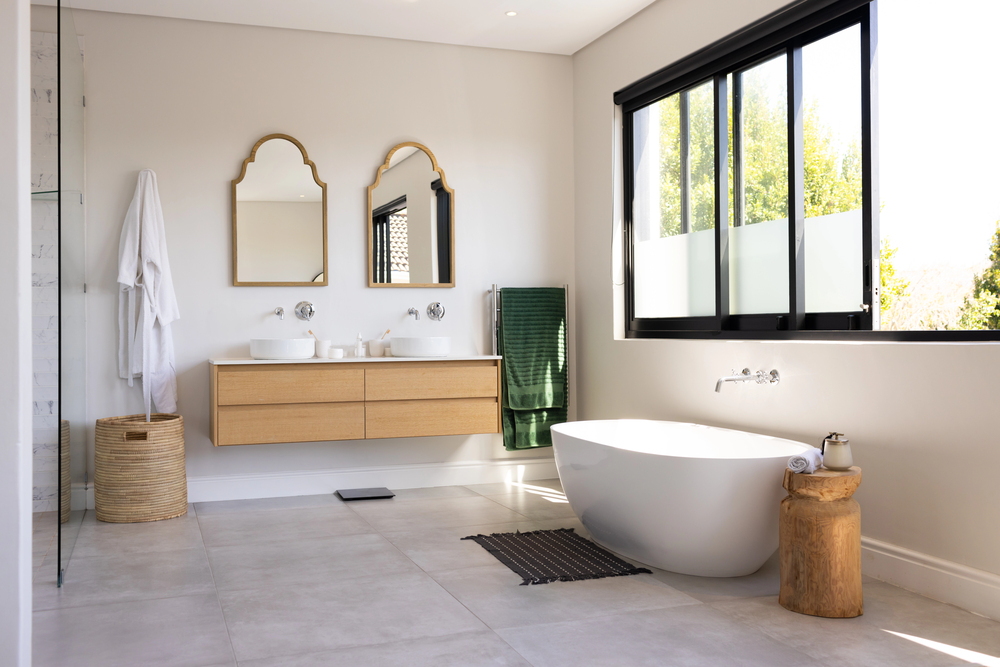
What Flooring Is Best for Bathrooms?
Key Considerations:
- Complete waterproofing
- Slip resistance
- Hygiene and maintenance
Top Recommendations:
- Vinyl Flooring (Sheet or LVT)
- Why it works: Impervious to water, budget-friendly, and available in high-end finishes that replicate tile or marble.
- Installation tip: Opt for glued-down LVT for better water sealing in high-moisture zones.
- Why it works: Impervious to water, budget-friendly, and available in high-end finishes that replicate tile or marble.
- Porcelain Tiles
- Why it works: The gold standard for bathrooms — dense, waterproof, and timeless.
- Expert insight: Use epoxy grout instead of cement-based grout for mould resistance.
- Why it works: The gold standard for bathrooms — dense, waterproof, and timeless.
- Waterproof Laminate
- Why it works: Combines the warmth of wood with waterproof core technology (e.g., Aqua+ or Hydroseal systems).
- Best for: Homeowners wanting a consistent look from hallway to ensuite.
- Why it works: Combines the warmth of wood with waterproof core technology (e.g., Aqua+ or Hydroseal systems).
Avoid: Carpet or hardwood: both absorb moisture, encouraging mould and warping.
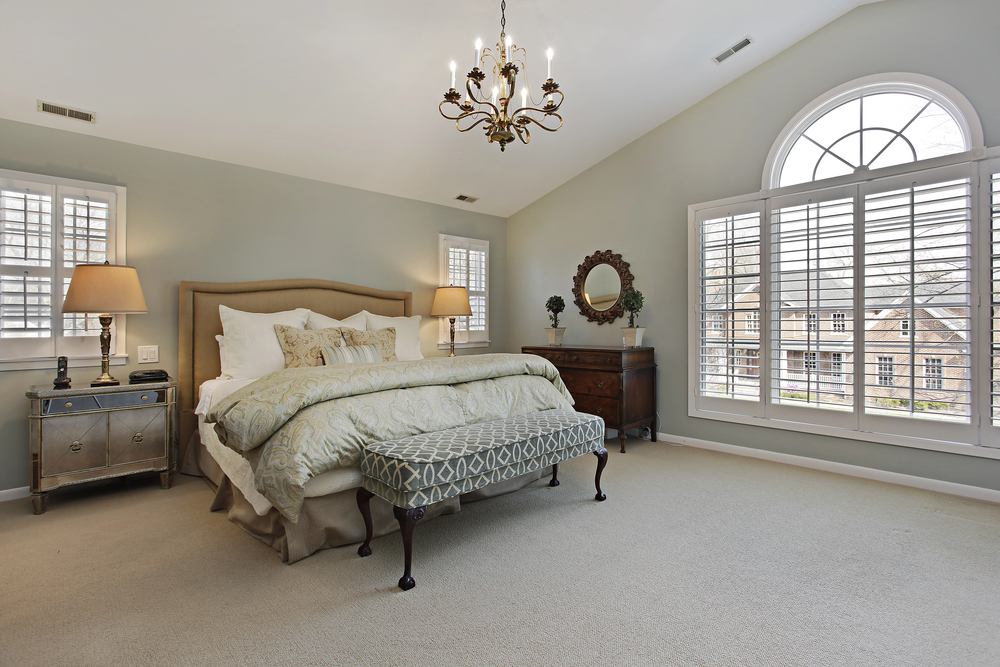
What’s the Best Flooring for Bedrooms?
Key Considerations:
- Warmth underfoot
- Sound insulation
- Comfort
Top Recommendations:
- Carpet
- Why it works: The most comfortable and quiet option for bedrooms.
- Best fibres: Wool blends for luxury; polypropylene for affordability and stain resistance.
- Why it works: The most comfortable and quiet option for bedrooms.
- Engineered Wood Flooring
- Why it works: Adds elegance and resale value. Combine with a plush rug for extra comfort.
- Maintenance: Periodic cleaning with pH-neutral wood cleaner; occasional refinishing extends lifespan.
- Why it works: Adds elegance and resale value. Combine with a plush rug for extra comfort.
- Cork Flooring
- Why it works: Naturally insulating, sustainable, and antimicrobial.
- Bonus: Reduces sound transmission between floors: ideal for upstairs bedrooms.
- Why it works: Naturally insulating, sustainable, and antimicrobial.
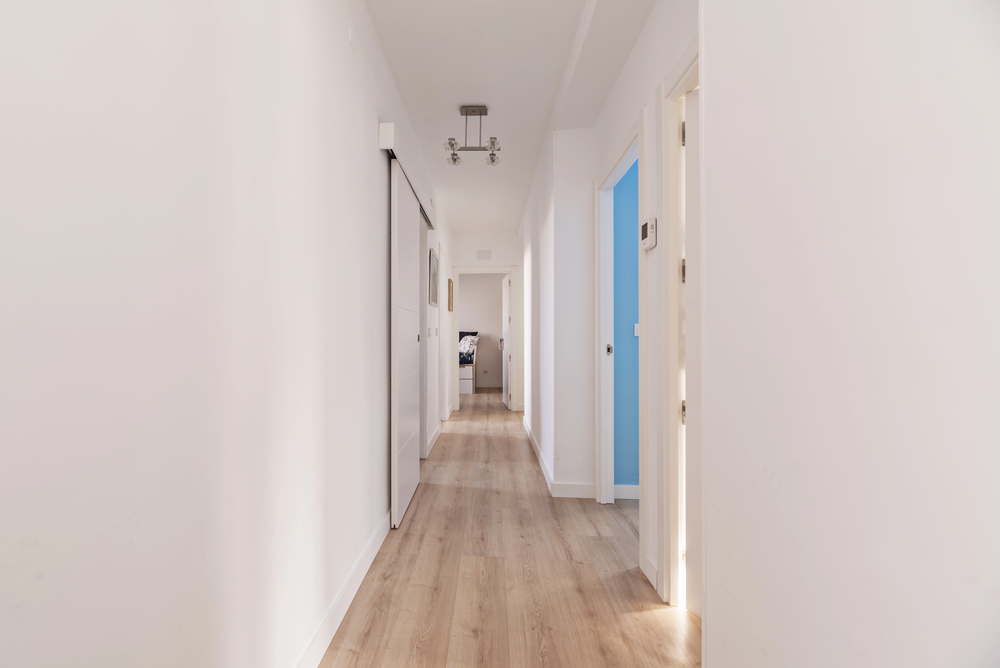
What Flooring Is Best for Hallways and Entryways?
Key Considerations:
- High traffic and impact resistance
- Dirt and moisture control
- Easy cleaning
Top Recommendations:
- Porcelain Tile
- Why it works: Tough, scratch-proof, and resistant to muddy shoes or pet paws.
- Design note: Large-format tiles can make narrow hallways feel more spacious.
- Why it works: Tough, scratch-proof, and resistant to muddy shoes or pet paws.
- Luxury Vinyl Plank (LVP)
- Why it works: Slip-resistant and low maintenance, perfect for busy households.
- Durability: Wear layers up to 0.55mm provide heavy commercial-grade performance.
- Why it works: Slip-resistant and low maintenance, perfect for busy households.
- Laminate Flooring (AC4 or AC5 Rated)
- Why it works: Highly abrasion-resistant and budget-friendly.
- Pro tip: Use entrance mats to reduce grit damage.
- Why it works: Highly abrasion-resistant and budget-friendly.
Flooring Comparison Table: Best Flooring by Room
| Room | Recommended Flooring | Key Benefits | Lifespan | Avoid |
| Living Room | Engineered Wood, LVP, Carpet | Warm, stylish, durable | 10–30 years | Tiles |
| Kitchen | LVT, Porcelain Tile, Engineered Wood | Waterproof, hygienic, easy-clean | 15–25 years | Solid Wood |
| Bathroom | Vinyl, Porcelain Tile, Waterproof Laminate | 100% waterproof, slip-resistant | 10–20 years | Carpet, Hardwood |
| Bedroom | Carpet, Engineered Wood, Cork | Quiet, comfortable, warm | 10–25 years | Tile, Stone |
| Hallway | Porcelain Tile, LVP, Laminate | Durable, low-maintenance | 15–30 years | Carpet |
How to Choose Flooring That Lasts
When making your final decision, consider:
- Foot Traffic: Higher AC ratings (AC4–AC5) for durability in busy areas.
- Moisture Levels: Stick with vinyl or tile in wet rooms.
- Comfort vs. Maintenance: Soft floors like carpet feel cosy but require more care.
- Installation Costs: Floating floors (LVP, laminate) are easier and cheaper to install than tiles or glued-down wood.
- Sustainability: FSC-certified wood, cork, and recycled vinyl are great eco-conscious options.
Match the Material to the Space
The best flooring for your home isn’t just about looks: it’s about performance. A professional installer can assess your subfloor, moisture levels and lifestyle needs to recommend the perfect fit for each space.
If you’re planning a renovation or build, consult a flooring specialist to ensure you get the right balance of style, durability and value.

